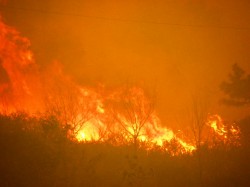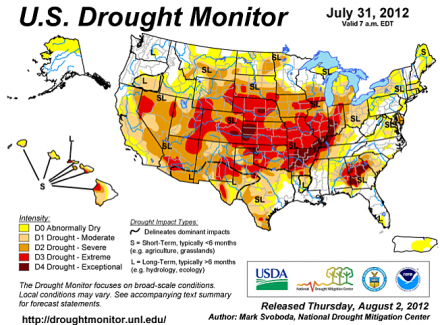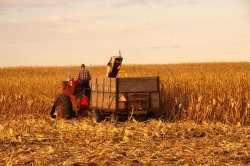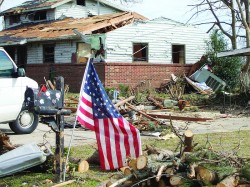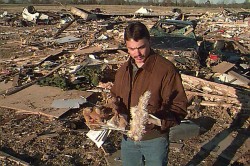 Presidents have always exercised emergency powers, but now thanks to dozens of new laws, regulations, court decisions and executive orders, Barack Obama is the most powerful president in all of U.S. history. Of course the U.S. Constitution does not actually give the president any special powers during a time of national emergency, but over time presidents have decided that they should be able to exercise such powers and the courts have generally agreed with them. During World War II and prior to that, these emergency powers were largely uncodified and were primarily used during times of war. But since World War II things have completely changed, and this has particularly been true since 9/11. Over the past decade or so, a whole host of extraordinary powers have specifically been given to the office of the president, and all that it takes to exercise them is a major “national emergency”. So if we do have a full-blown economic collapse, a historic natural disaster, a significant war or a massive pandemic, Barack Obama could use the emergency powers that he has been given to essentially take authority over everything.
Presidents have always exercised emergency powers, but now thanks to dozens of new laws, regulations, court decisions and executive orders, Barack Obama is the most powerful president in all of U.S. history. Of course the U.S. Constitution does not actually give the president any special powers during a time of national emergency, but over time presidents have decided that they should be able to exercise such powers and the courts have generally agreed with them. During World War II and prior to that, these emergency powers were largely uncodified and were primarily used during times of war. But since World War II things have completely changed, and this has particularly been true since 9/11. Over the past decade or so, a whole host of extraordinary powers have specifically been given to the office of the president, and all that it takes to exercise them is a major “national emergency”. So if we do have a full-blown economic collapse, a historic natural disaster, a significant war or a massive pandemic, Barack Obama could use the emergency powers that he has been given to essentially take authority over everything.
There is not a single document or series of documents that contain all of the emergency powers that Barack Obama could potentially wield during a major national emergency. As I mentioned above, these powers come from literally dozens of laws, regulations, court decisions and executive orders. But in this article I will discuss a few important documents. One of these is a presidential directive that was issued during the second term of George W. Bush. It is entitled NATIONAL SECURITY PRESIDENTIAL DIRECTIVE/NSPD – 51/HOMELAND SECURITY PRESIDENTIAL DIRECTIVE/HSPD – 20, and you can take a look at it on the FEMA website right here. This document is primarily concerned with the continuity of our federal government in the event of a catastrophic emergency. So precisely what would constitute a “catastrophic emergency”? The following is how the document defines that term…
“Catastrophic Emergency” means any incident, regardless of location, that results in extraordinary levels of mass casualties, damage, or disruption severely affecting the U.S. population, infrastructure, environment, economy, or government functions;
That sounds quite broad to me. It could apply to all sorts of scenarios.
If we do have such a “catastrophic emergency”, the president essentially becomes a dictator at that point. The document certainly talks about the need to ensure that “constitutional government” continues, but during the course of the emergency there really is not much of a role for the other two branches of government to play. Instead, the “shadow government” takes over under the overall command of the president. The following is a short excerpt from the document…
The President shall lead the activities of the Federal Government for ensuring constitutional government. In order to advise and assist the President in that function, the Assistant to the President for Homeland Security and Counterterrorism (APHS/CT) is hereby designated as the National Continuity Coordinator. The National Continuity Coordinator, in coordination with the Assistant to the President for National Security Affairs (APNSA), without exercising directive authority, shall coordinate the development and implementation of continuity policy for executive departments and agencies. The Continuity Policy Coordination Committee (CPCC), chaired by a Senior Director from the Homeland Security Council staff, designated by the National Continuity Coordinator, shall be the main day-to-day forum for such policy coordination.
Of course the 11 page document that we have on the FEMA website is just the tip of the iceberg when it comes to continuity of government planning. Unfortunately, most of the plans are top secret and are not allowed to be seen by the public. Astonishingly, this even applies to members of Congress. The following comes from Wikipedia…
On July 18, 2007, Rep. Peter DeFazio (D-OR), a member of the U.S. House Committee on Homeland Security, requested the classified and more detailed version of the government’s continuity of government plan in a letter signed by him and the chairperson of the House Homeland Committee, which is supposed to have access to confidential government information. The president refused to provide the information, to the surprise of the congressional committee.
Another document that raises a lot of red flags is an executive order entitled “National Defense Resources Preparedness” that was issued by Barack Obama on March 16th, 2012. This particular executive order updates previous executive orders, and it gives the president extraordinary authority during a time of national emergency. Below, I have posted most of section 201 of that executive order. As you can see, it potentially gives Barack Obama authority over just about everything during a time of national emergency if he feels it is needed for “national defense”…
Sec. 201. Priorities and Allocations Authorities. (a) The authority of the President conferred by section 101 of the Act, 50 U.S.C. App. 2071, to require acceptance and priority performance of contracts or orders (other than contracts of employment) to promote the national defense over performance of any other contracts or orders, and to allocate materials, services, and facilities as deemed necessary or appropriate to promote the national defense, is delegated to the following agency heads:
(1) the Secretary of Agriculture with respect to food resources, food resource facilities, livestock resources, veterinary resources, plant health resources, and the domestic distribution of farm equipment and commercial fertilizer;
(2) the Secretary of Energy with respect to all forms of energy;
(3) the Secretary of Health and Human Services with respect to health resources;
(4) the Secretary of Transportation with respect to all forms of civil transportation;
(5) the Secretary of Defense with respect to water resources; and
(6) the Secretary of Commerce with respect to all other materials, services, and facilities, including construction materials.
(b) The Secretary of each agency delegated authority under subsection (a) of this section (resource departments) shall plan for and issue regulations to prioritize and allocate resources and establish standards and procedures by which the authority shall be used to promote the national defense, under both emergency and non-emergency conditions. Each Secretary shall authorize the heads of other agencies, as appropriate, to place priority ratings on contracts and orders for materials, services, and facilities needed in support of programs approved under section 202 of this order.
A similar executive order regarding national communications was issued on July 6th, 2012.
But the powers that Barack Obama could potentially wield during a time of national emergency are not just limited to what is written down. This may shock many Americans, but it is true. In the past, presidents have used their “emergency powers” to suspend habeas corpus, to place American citizens in internment camps and to seize private property. The following comes from Wikipedia…
A claim of emergency powers was at the center of President Abraham Lincoln’s suspension of habeas corpus without Congressional approval in 1861. Lincoln claimed that the rebellion created an emergency that permitted him the extraordinary power of unilaterally suspending the writ. With Chief Justice Roger Taney sitting as judge, the Federal District Court of Maryland struck down the suspension in Ex Parte Merryman, although Lincoln ignored the order. 17 F. Cas. 144 (1861).
President Franklin Delano Roosevelt similarly invoked emergency powers when he issued an order directing that all Japanese Americans residing on the West Coast be placed into internment camps during World War II. The U.S. Supreme Court upheld this order in Korematsu v. United States. 323 U.S. 214 (1944).
Harry Truman declared the use of emergency powers when he seized private steel mills that failed to produce steel because of a labor strike in 1952. With the Korean War ongoing, Truman asserted that he could not wage war successfully if the economy failed to provide him with the material resources necessary to keep the troops well-equipped. The U.S. Supreme Court, however, refused to accept that argument in Youngstown Sheet & Tube Co. v. Sawyer, voting 6-3 that neither Commander in Chief powers nor any claimed emergency powers gave the President the authority to unilaterally seize private property without Congressional legislation. 343 U.S. 579.
And it is important to keep in mind that Barack Obama now possesses far more power than any of those presidents ever did. All it is going to take for him to exercise those powers is a major national emergency. This is something that Jim Powell discussed in an article for Forbes…
Not long after that, we found ourselves in an open-ended national emergency declared on September 14, 2001 and extended since by both George W. Bush and Barack Obama. This means the president has standby powers from hundreds of statutes that would enable him to re-introduce military conscription, seize private property and in myriad ways establish a government-run economy.
Thankfully, things are still somewhat stable for the moment so Obama does not have a reasonable excuse to use all of the powers that he has been given. But that could change at any time. If we do see a “catastrophic emergency” in the next year or so, there are very few limits on what Barack Obama would be able to do. That includes potentially postponing or suspending the 2016 election so that he can remain in office throughout the course of the national emergency.
We have never seen such a thing happen before, and hopefully we never will. And of course it isn’t just Barack Obama that we need to be concerned about. A future leader of this nation could potentially be even worse than him. It has been exceedingly foolish for us to give a single person so much power in the event of a “catastrophic emergency”, and in the end we may regret this bitterly.

